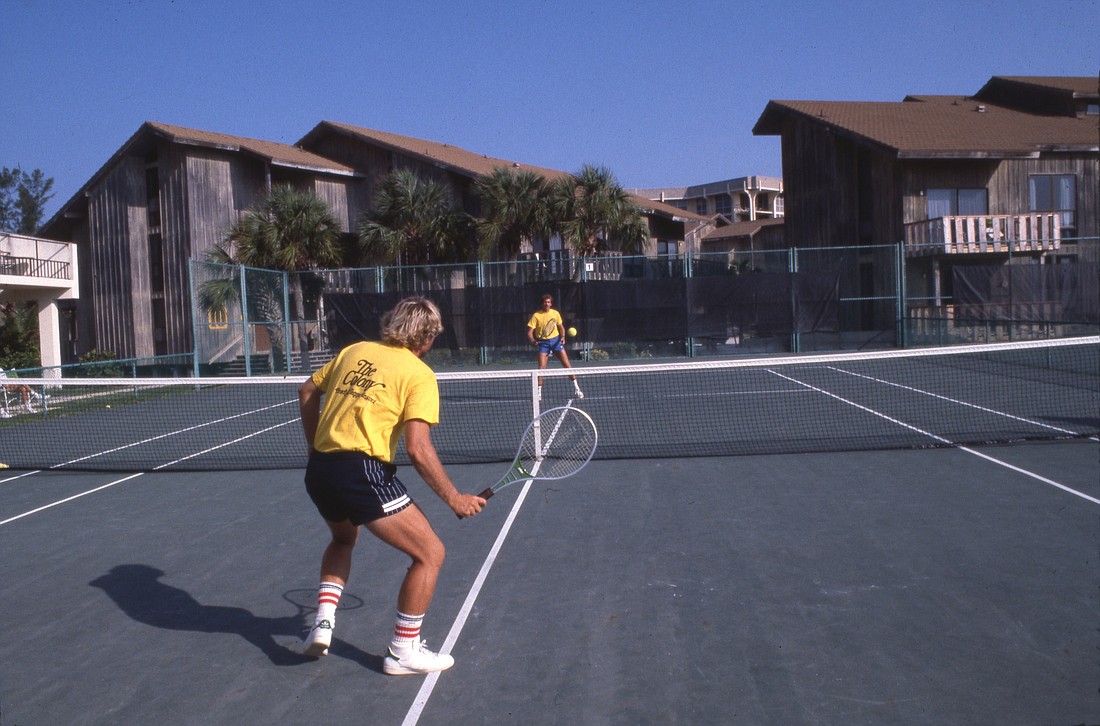- January 28, 2025
-
-
Loading

Loading

Though he will always be best known for creating what "Tennis" magazine called one of the best tennis-centric resorts in the United States, Dr. Murray "Murf" Klauber’s most ambitious — and personality-defining — real estate project was one that was never built.
Two decades ago, Klauber conceived a plan to develop a 210,000-square-foot conference center, a pair of high-rise hotels, retail and residences on 22 acres in downtown Sarasota bounded by First Street, Orange Avenue, Boulevard of the Arts and Central Avenue.
The futuristic Ringling Park One, as the $750 million concept came to be known, would be tied together through a high-speed telecommunications network that Klauber saw as critical to the project’s success in setting it apart from other cities’ meeting space.
Klauber also pushed forward the idea, in part, to smooth out the then-severe undulations in tourism that crippled area hotels and restaurants during summer months.
He envisioned the conference center — an idea that had been debated for more than a decade by then and still is today — as fitting for a city with a cultural heritage, visitor magnets such as beaches and aspirations for growth.
“He had visions for downtown, the Bayfront, Longboat,” says Michael Saunders, the founder and CEO of Michael Saunders & Co., the area’s largest residential real estate brokerage.
“No one was better at seeing a parcel of land and envisioning what it could become.”
Klauber spent more than $100,000 to develop videos, architectural renderings and a scale model of Ringling Park. He held a series of charrettes for the community to weigh in.
Proponents applauded the concept as one that would serve as the scaffolding for a 21st Century Sarasota.
Critics, however, excoriated Ringling Park One as too grandiose, too complex and too costly. Its modern architecture was derided as “'50s Buck Rogers” and compared to buildings from the animated TV show “The Jetsons.”
Sarasota’s City Commission agreed, and refused to hold hearings on the proposal, claiming it would be “too imposing in scope and scale.”
In January 2000, Klauber significantly scaled down the proposal, but again failed to gain traction with city officials.
Ever the fighter, Klauber slapped back in April 2000 and filed lawsuits in state and federal courts against the city and top officials, contending he had been denied due process and equal protection under the law. More than two years later, a federal judge ruled against him, according to November 2002 court records.
Undaunted, Klauber then took his proposal to Tampa and negotiated with Port of Tampa officials to build a version of Ringling Park on 11 acres within the Channelside District — not far from where Strategic Property Partners is today planning a $3 billion, mixed-use development that would include hotels and an expanded convention center.
By 2007, however, with the region’s real estate market showing signs of withering, Klauber pulled the plug, saying the project’s building costs had become too inflated.
The setback was nothing if not temporary, though.
“You never sat down with Murf where he didn’t end up saying ‘let’s do this’ and ‘let’s do that,’” says Kerry Kirschner, a former Sarasota City Commissioner and president of the Argus Foundation, a Sarasota business group, when Ringling Park One was proposed.